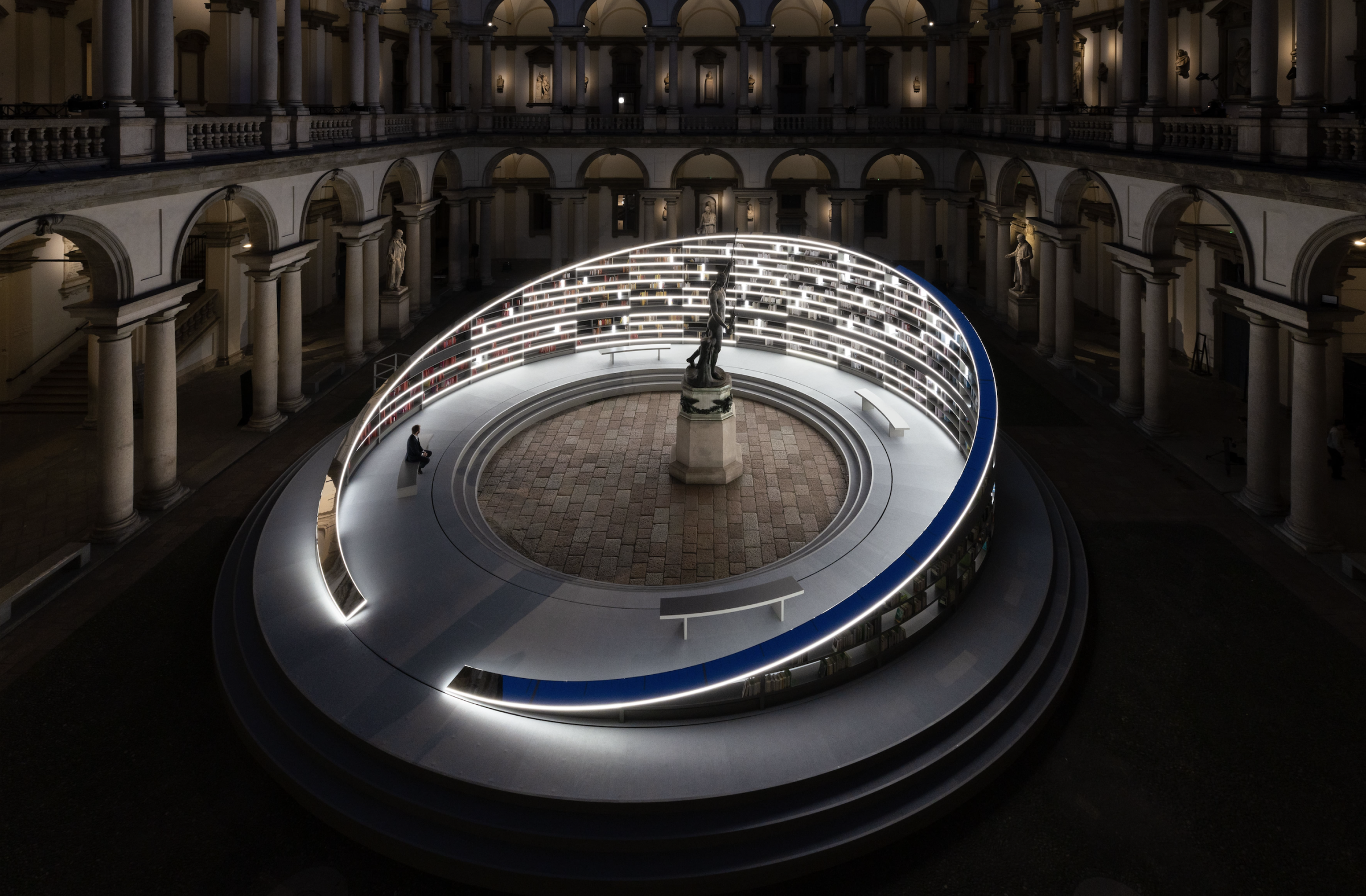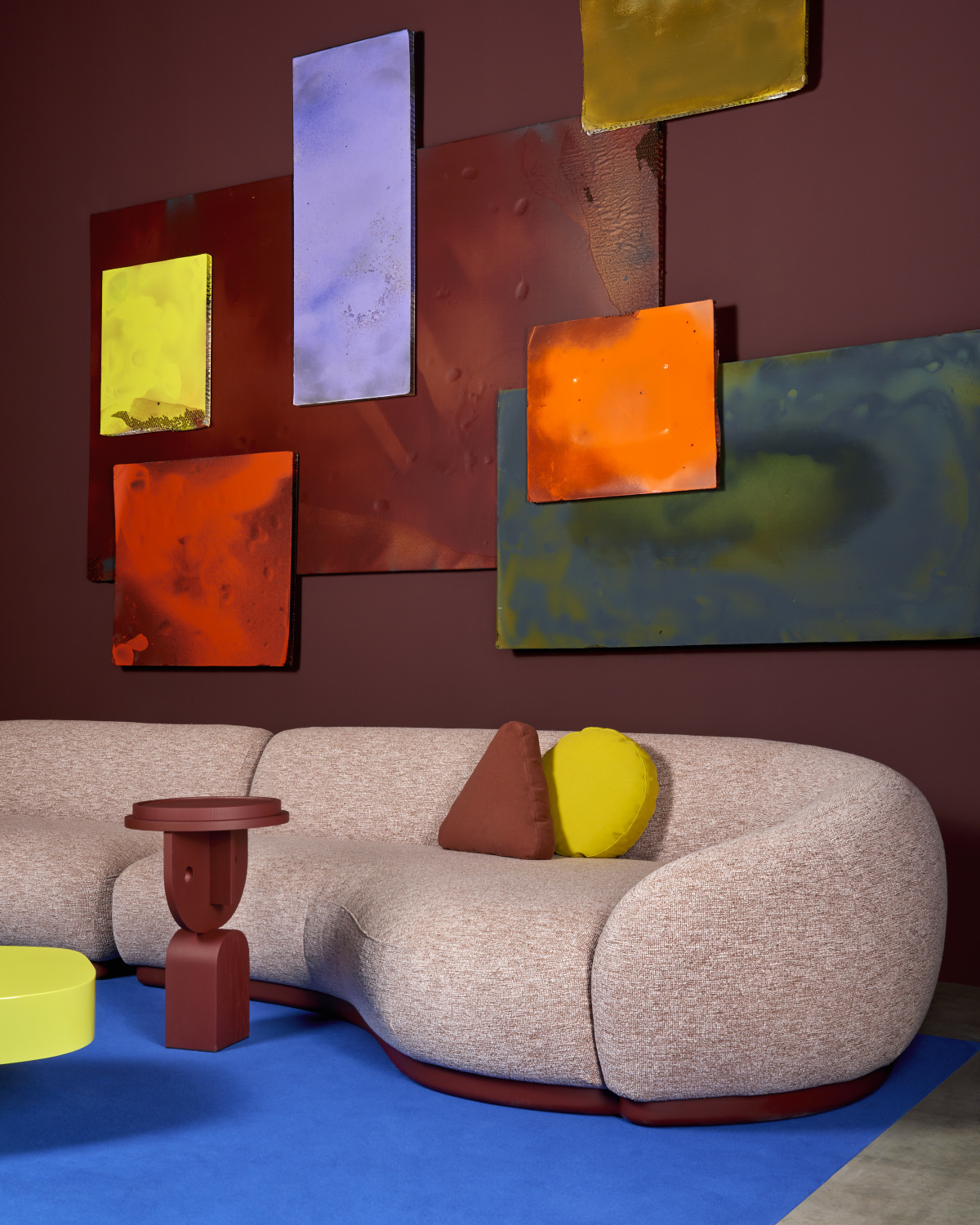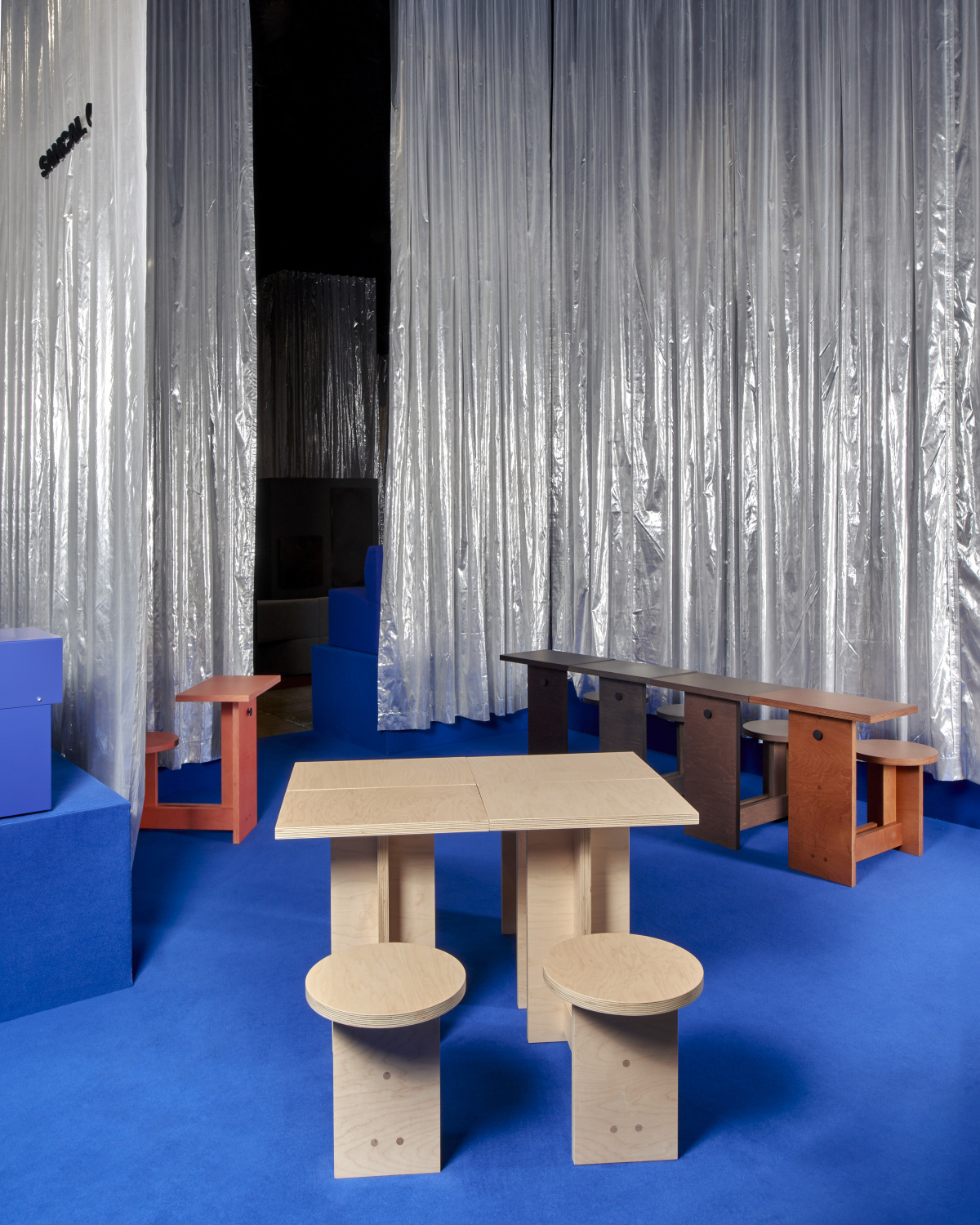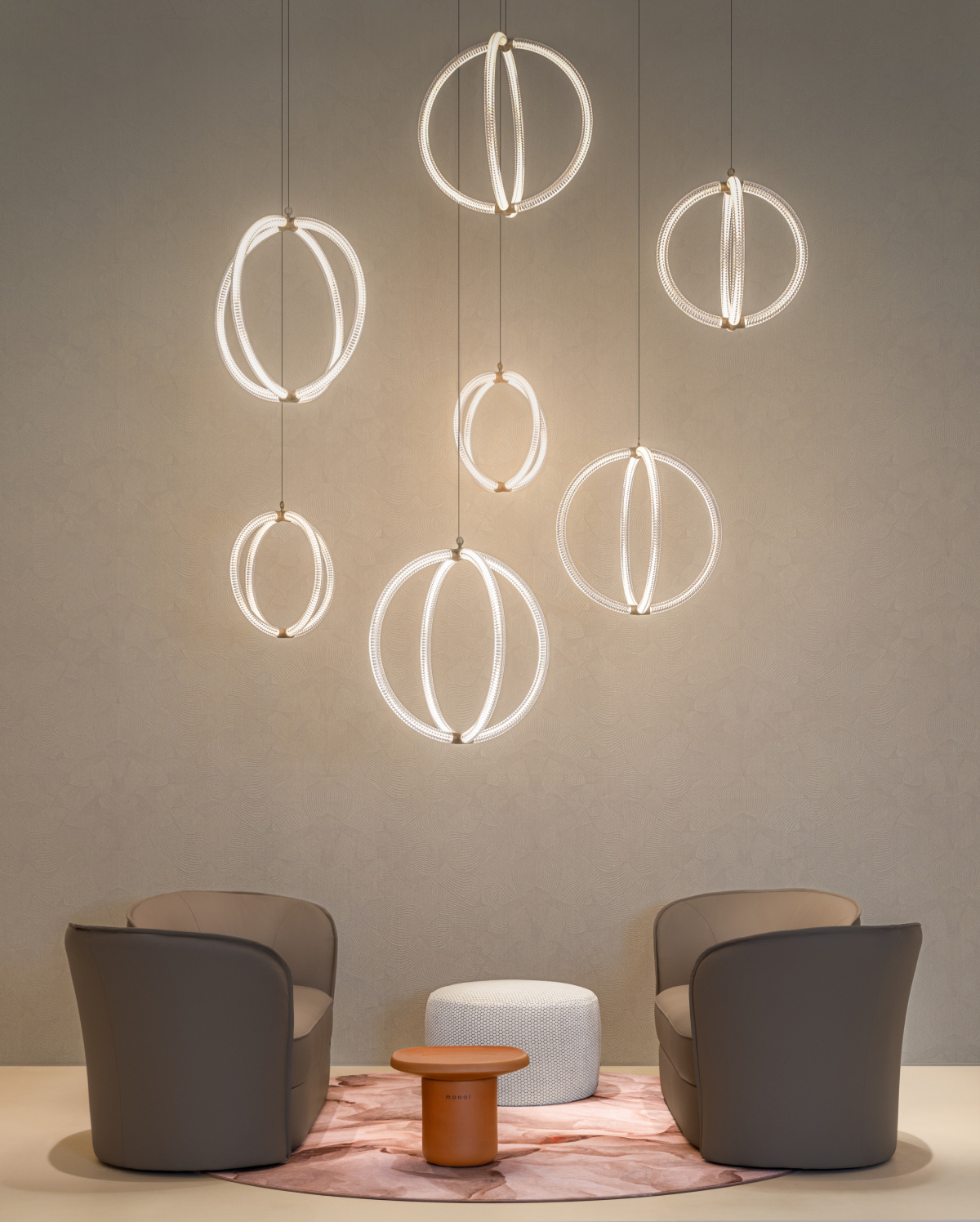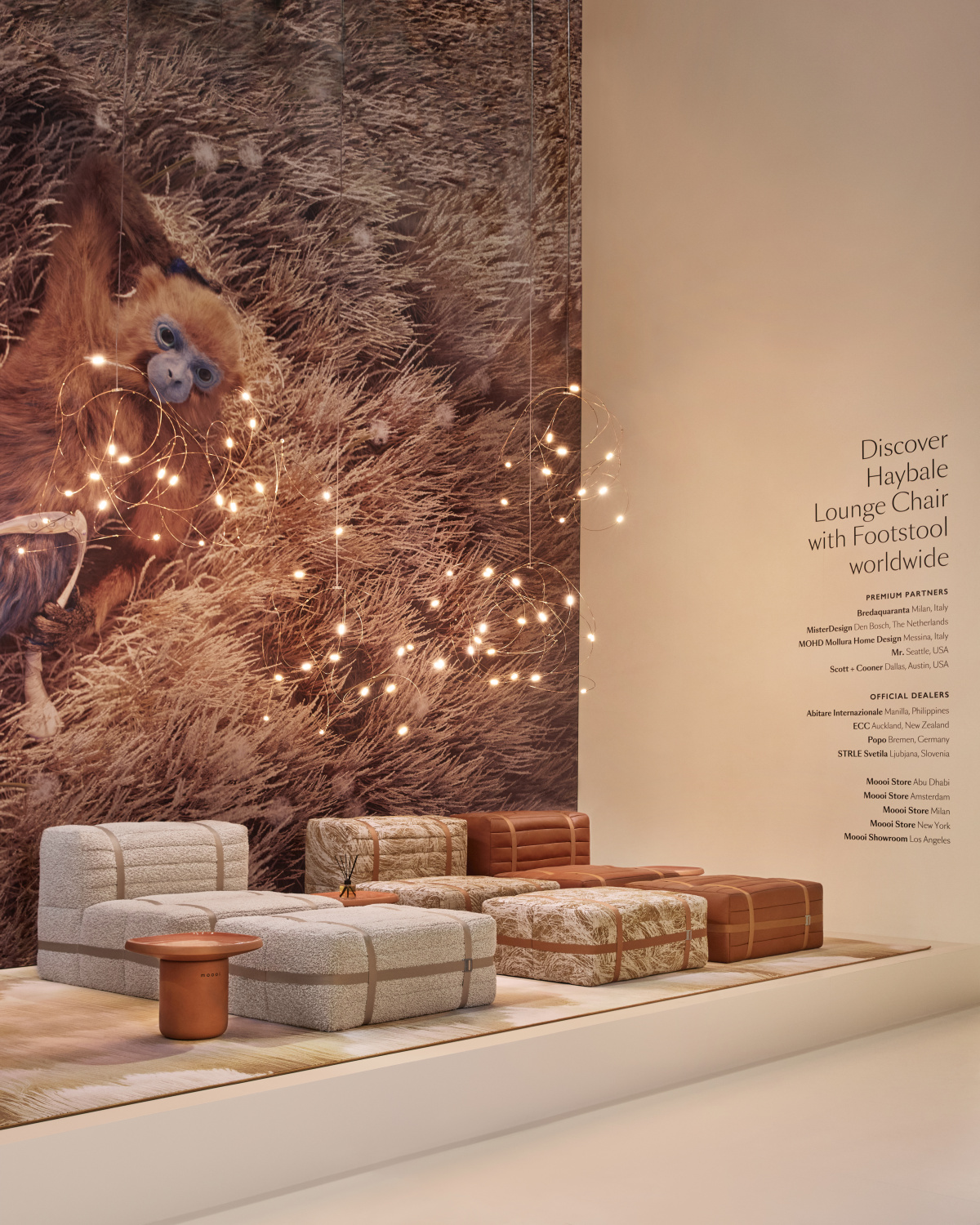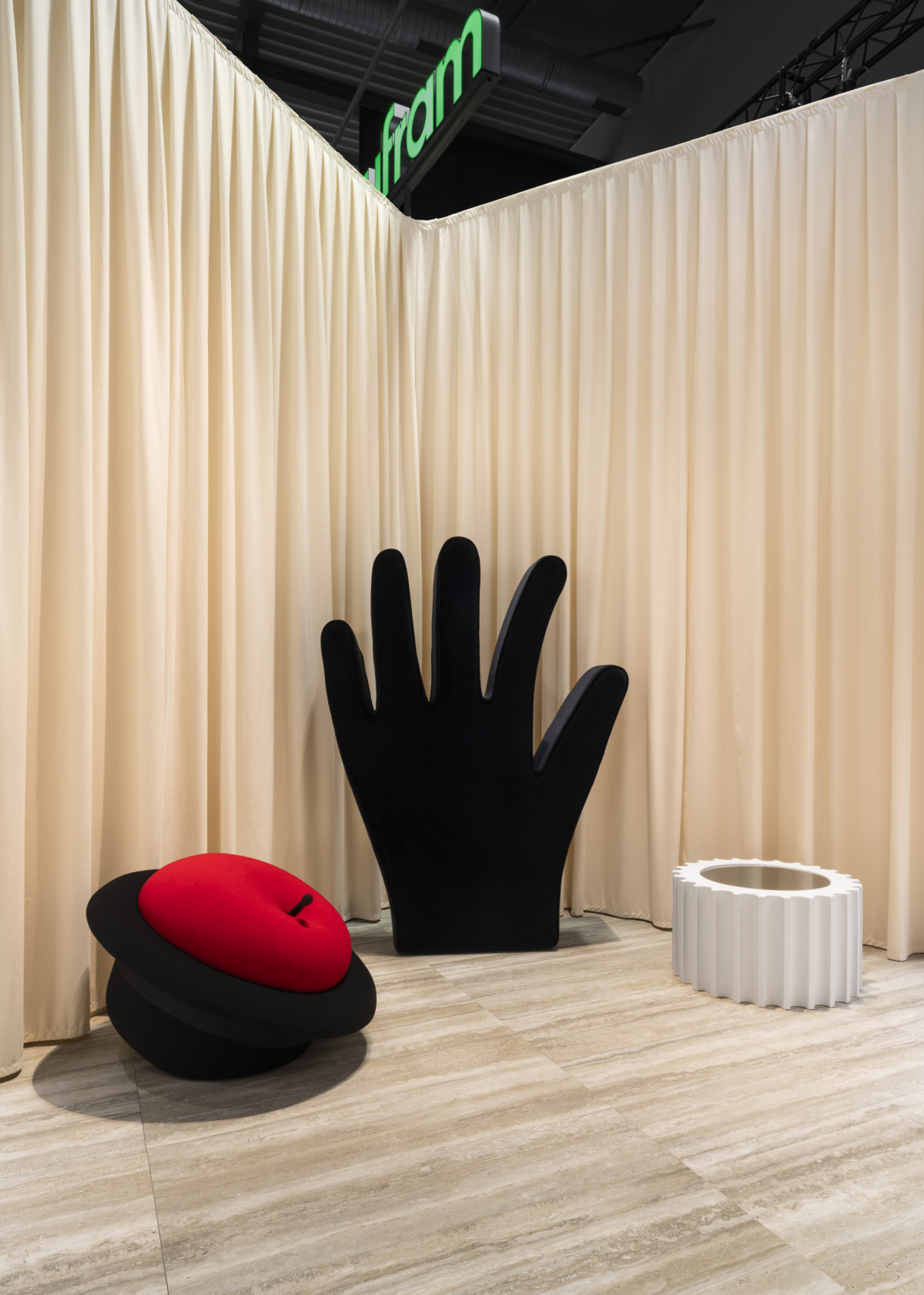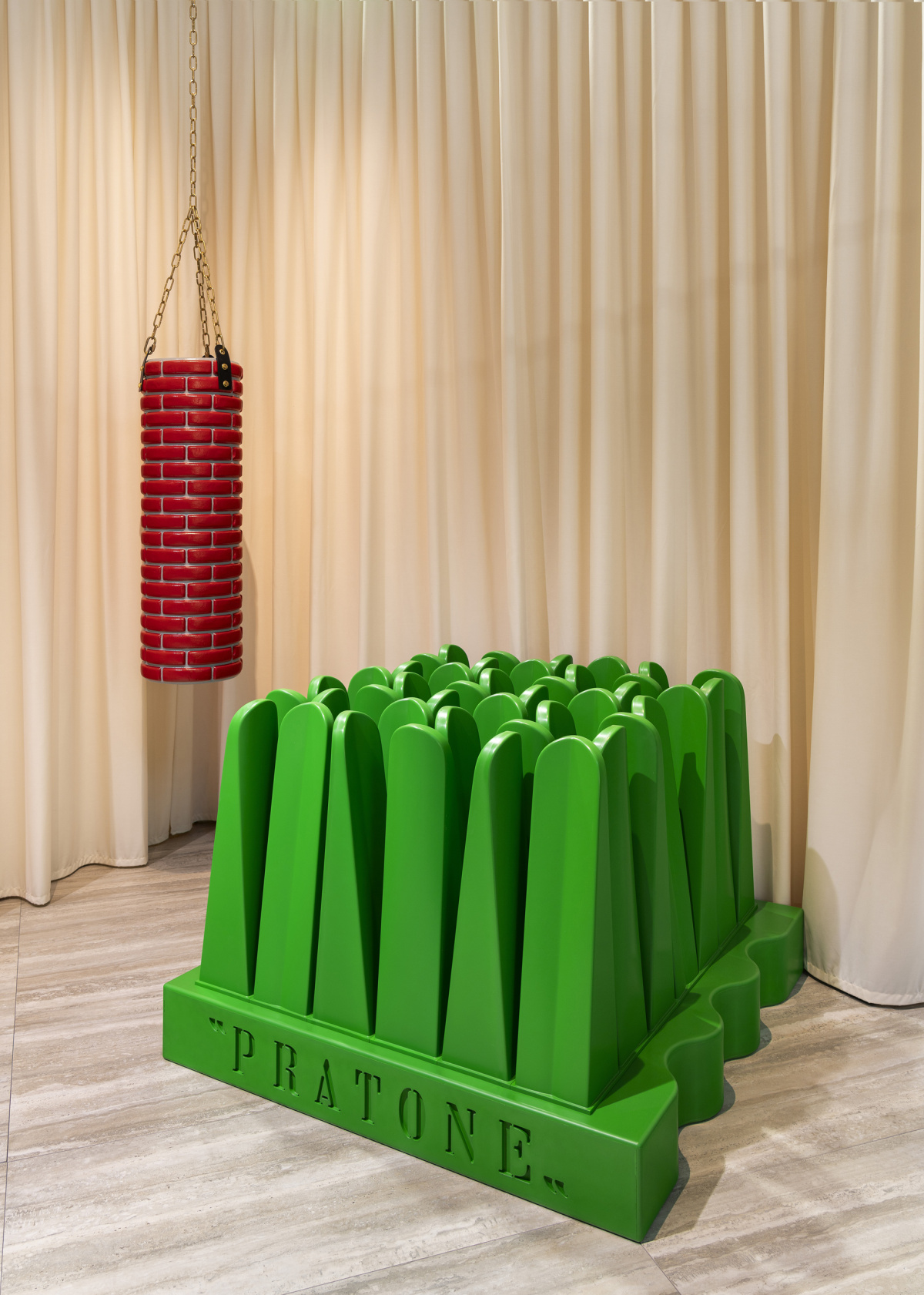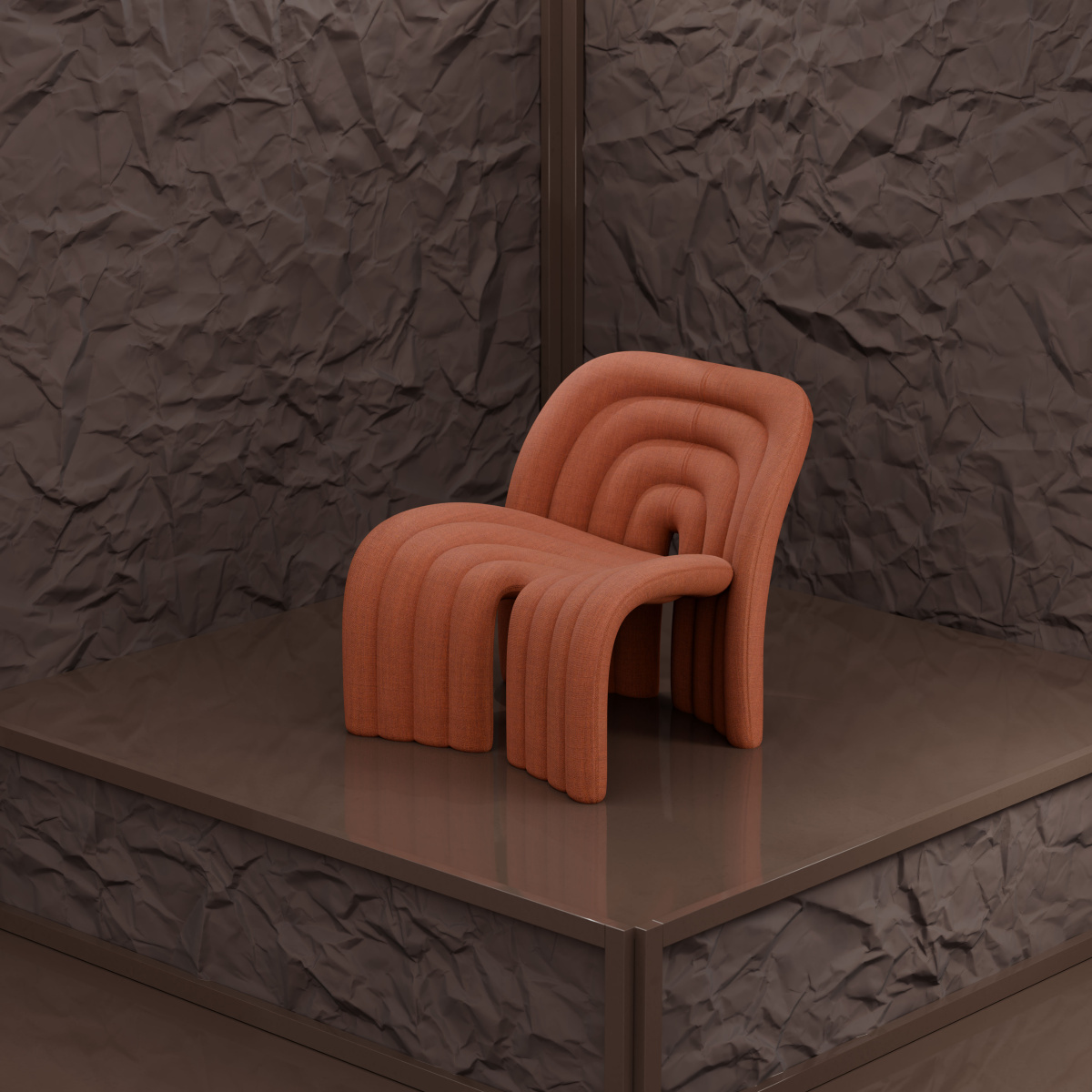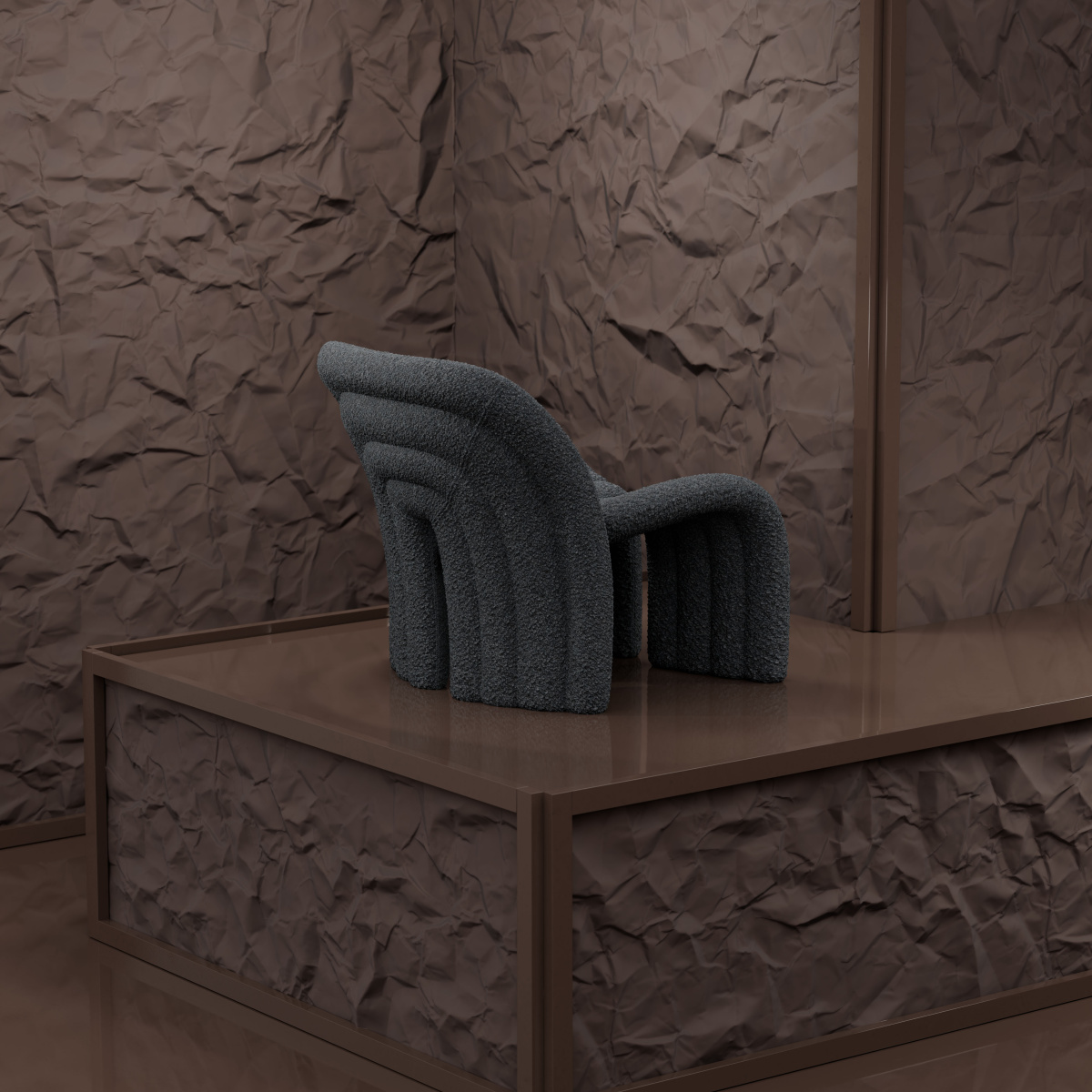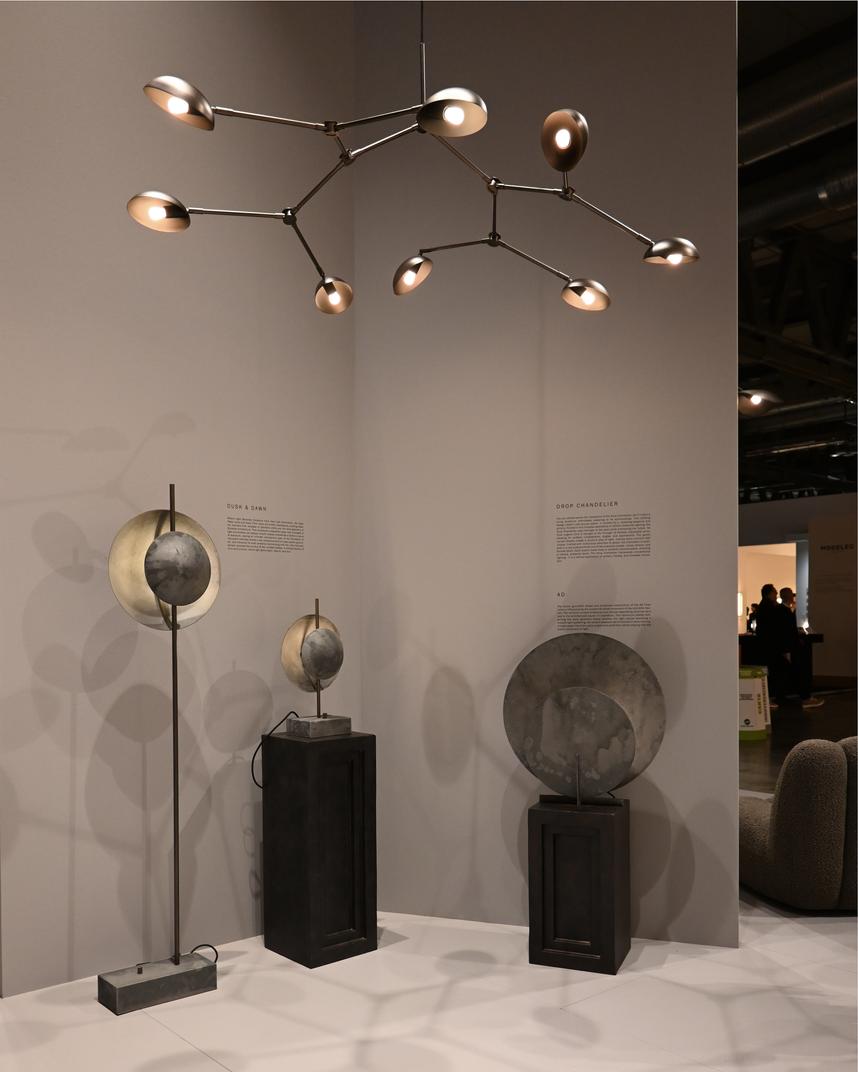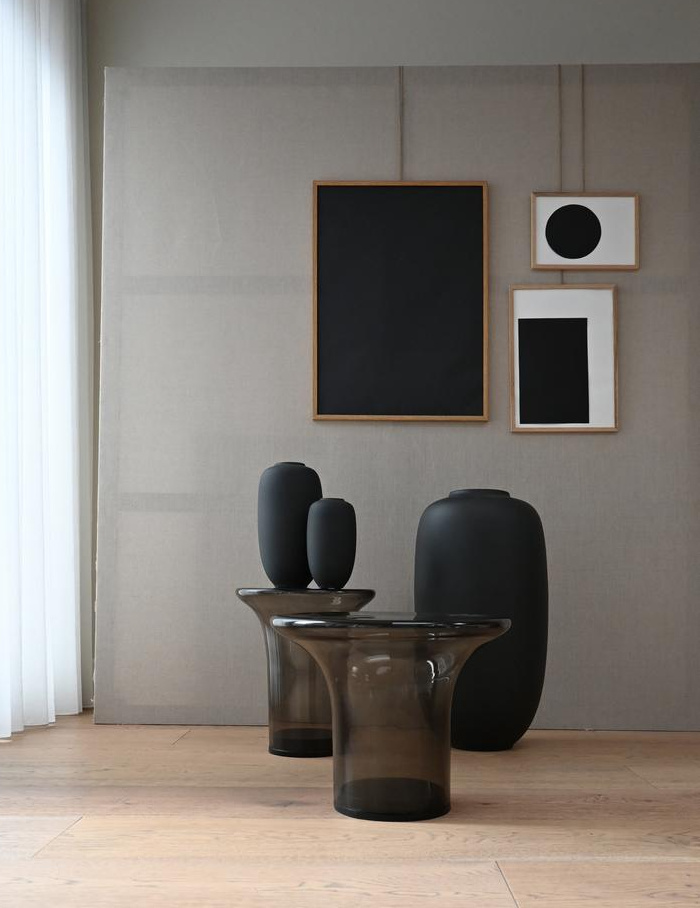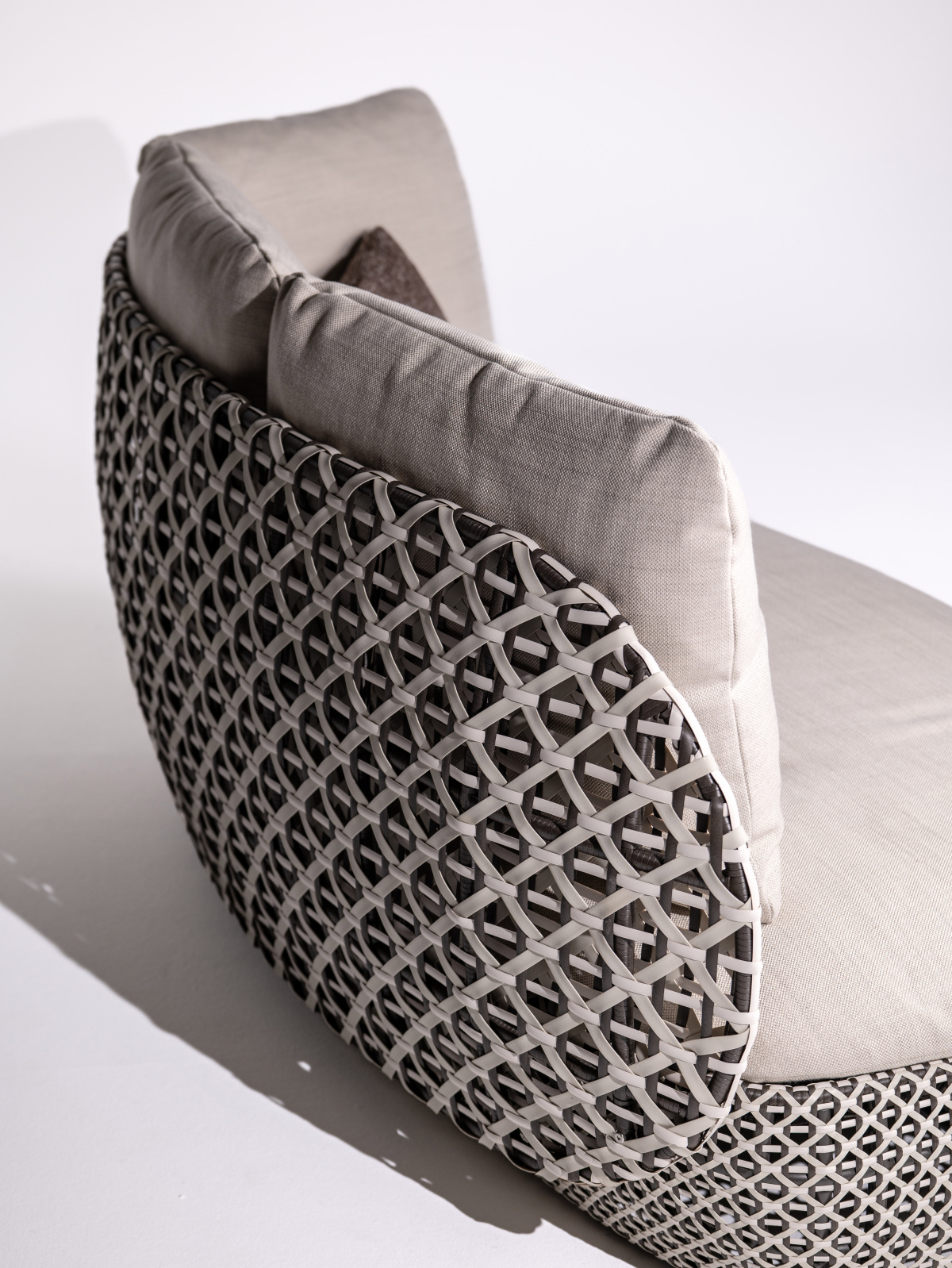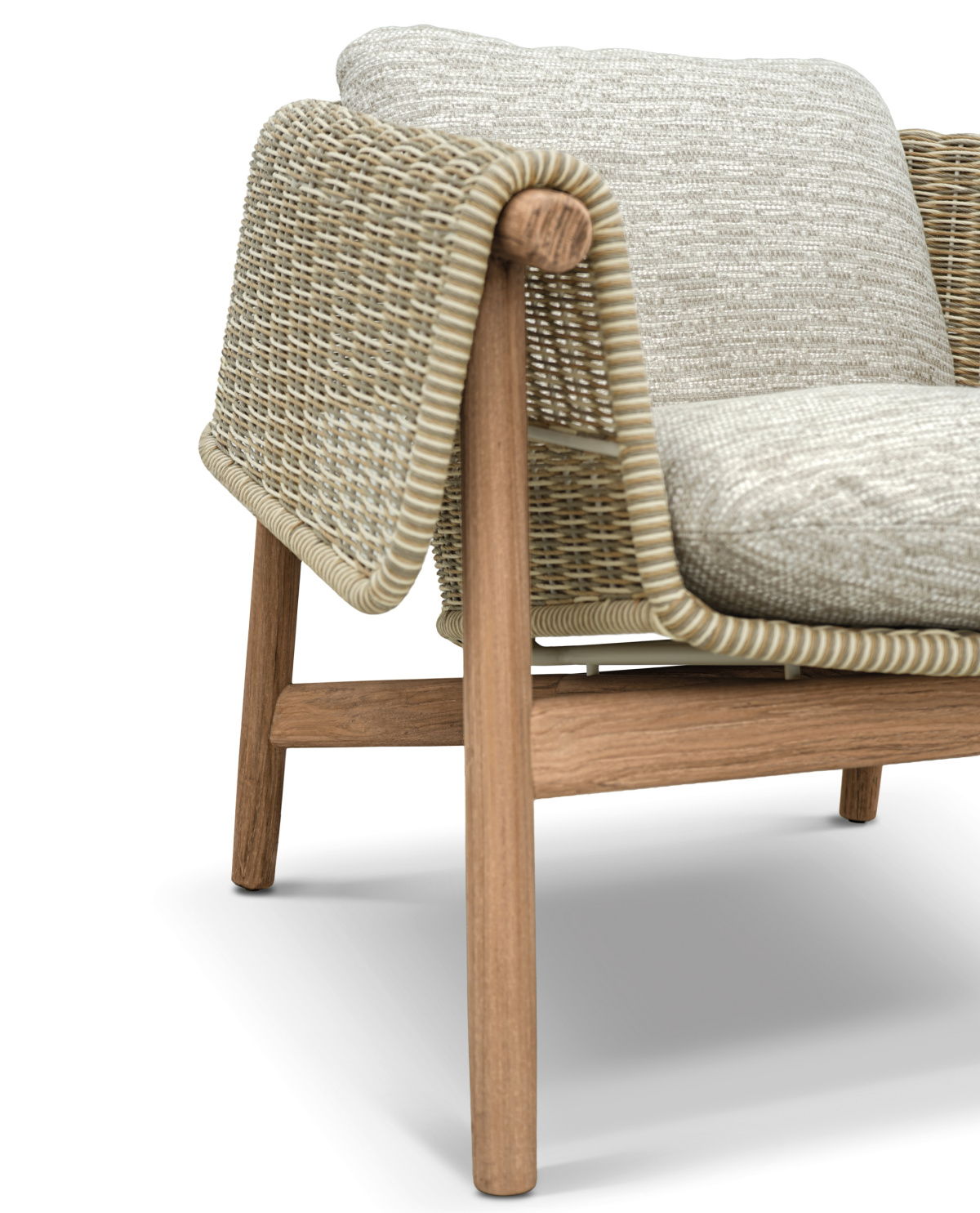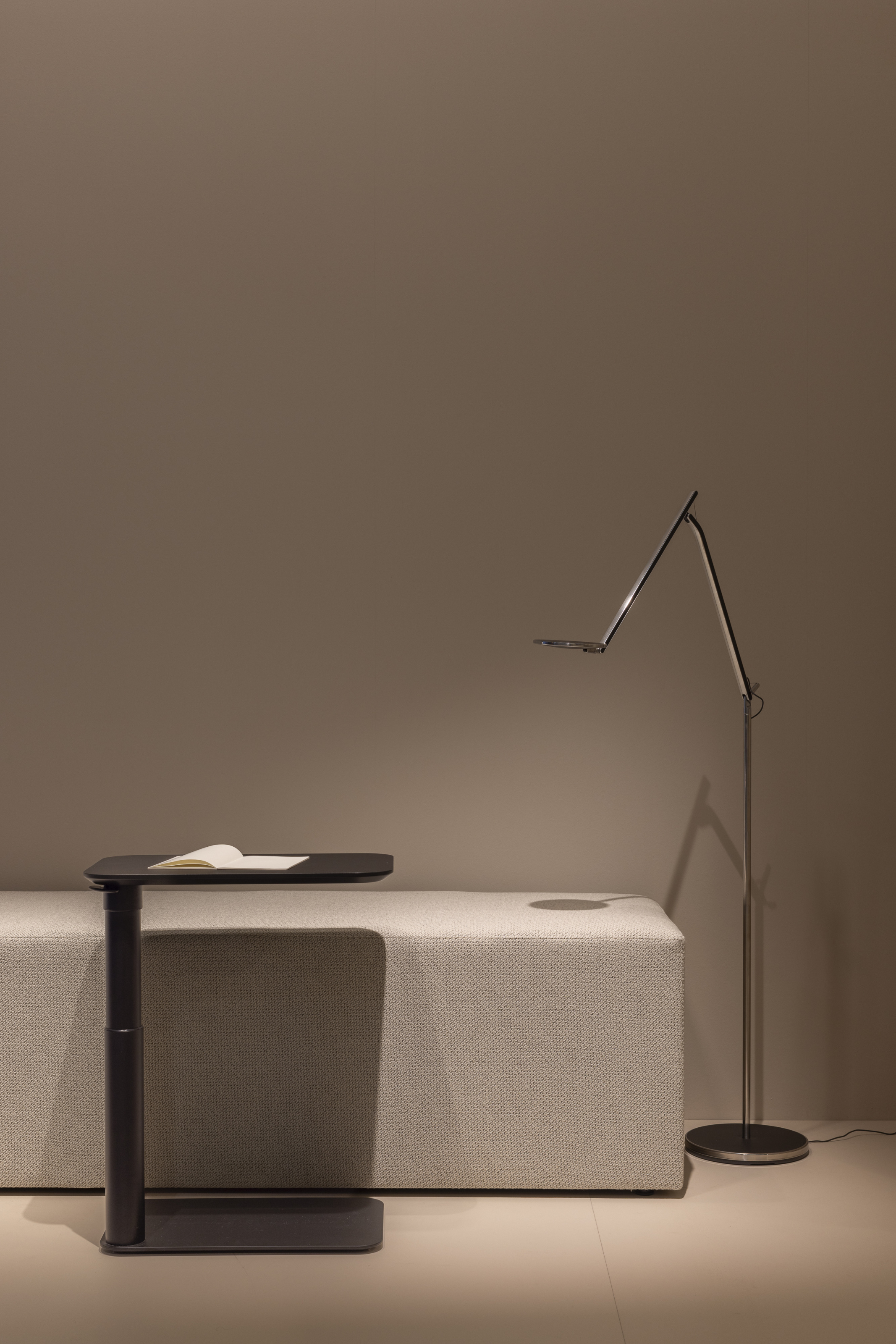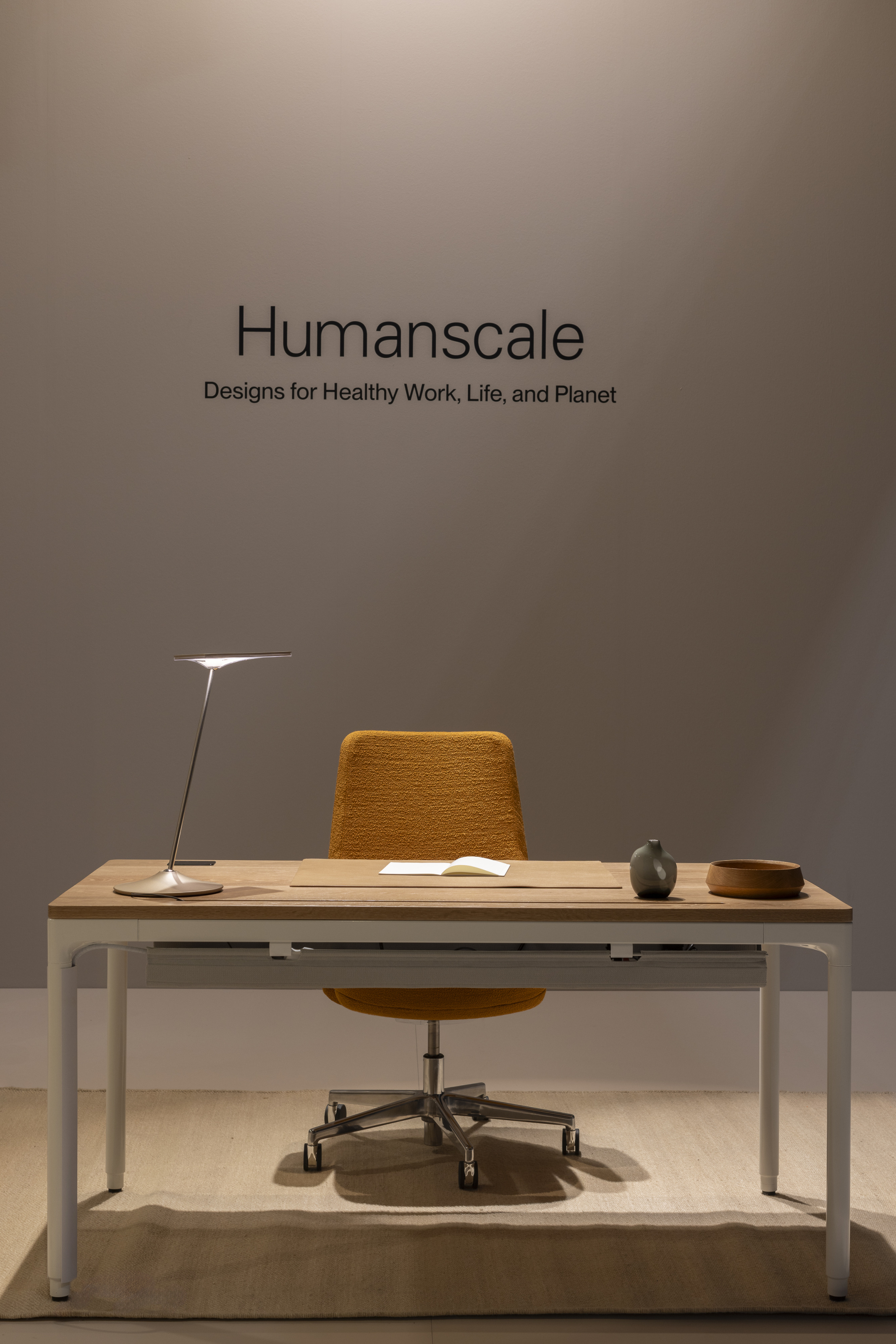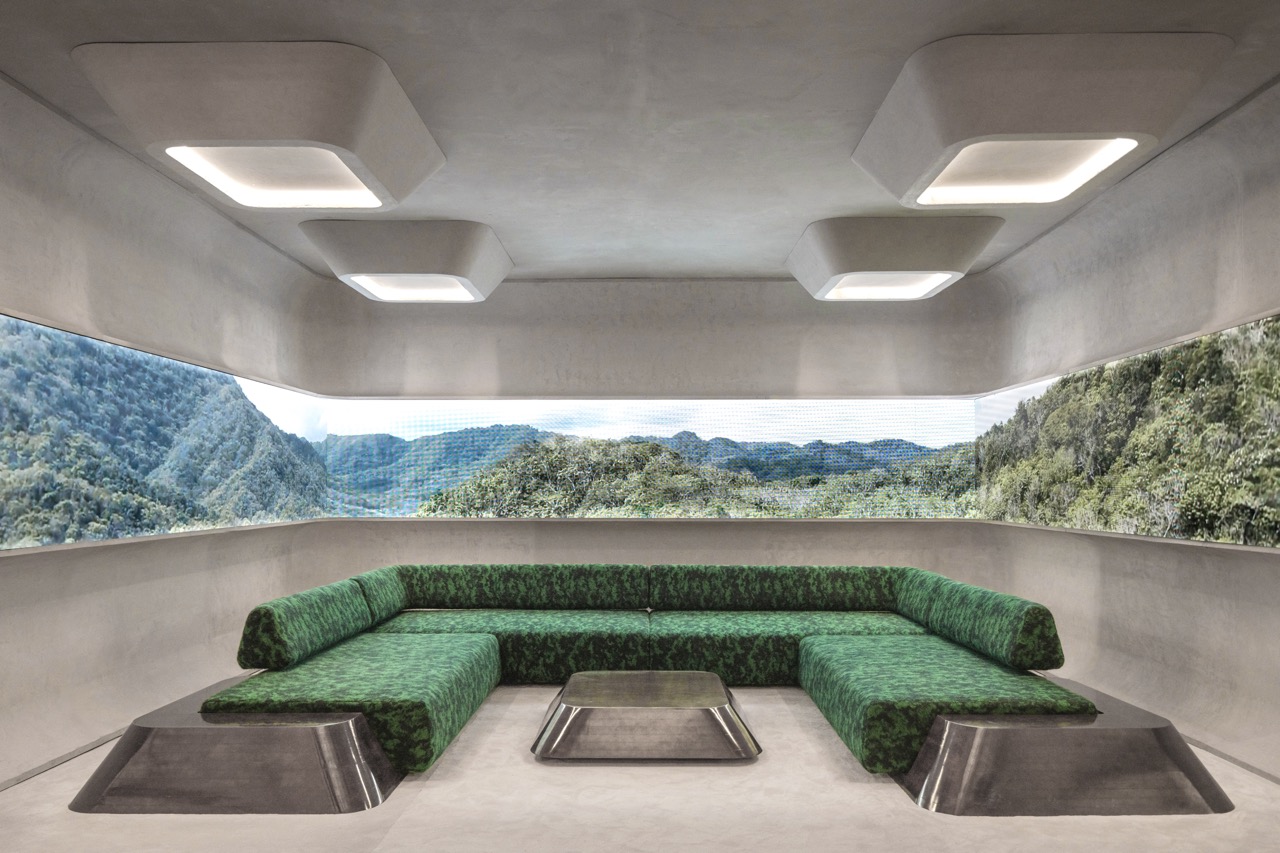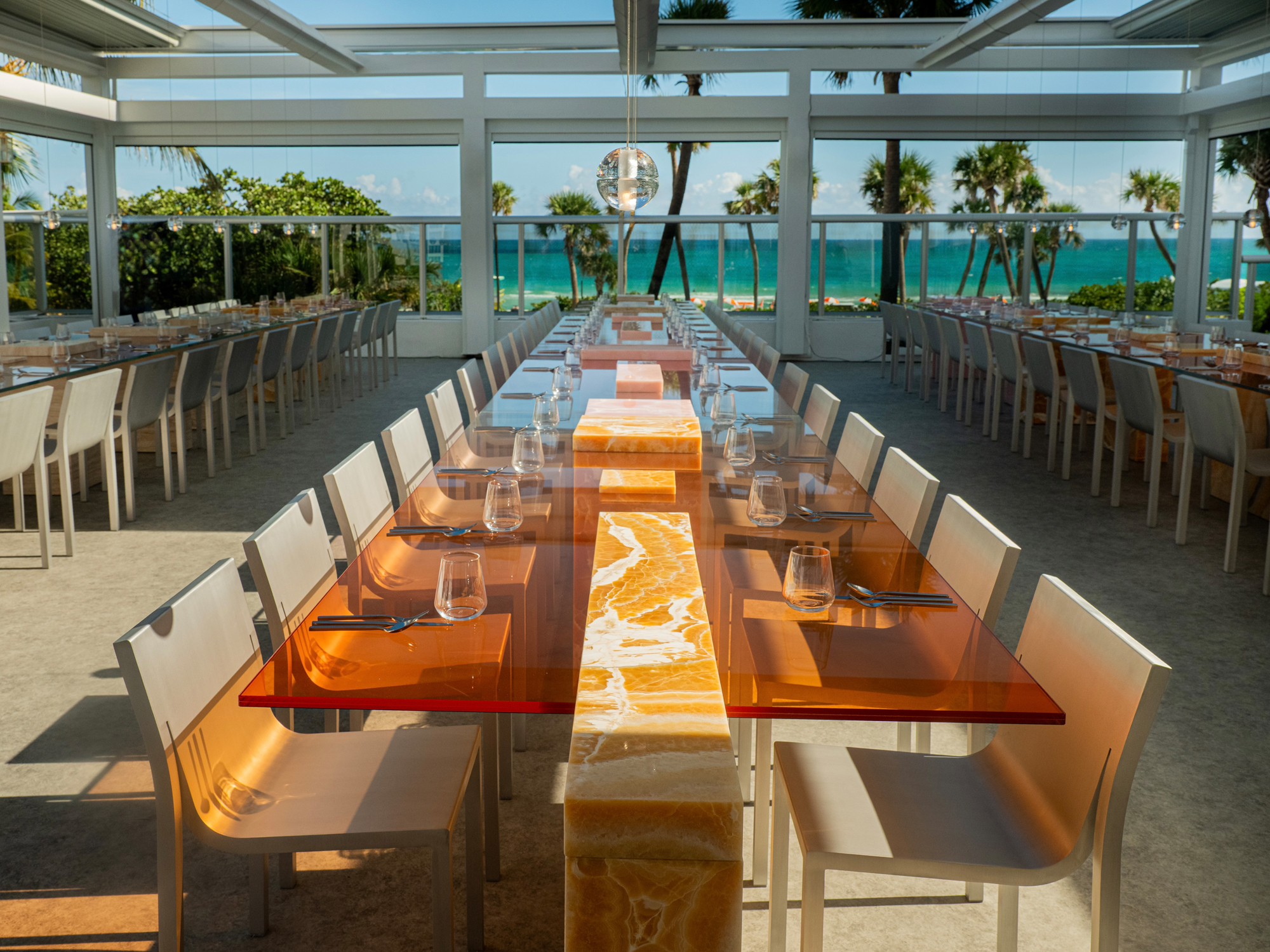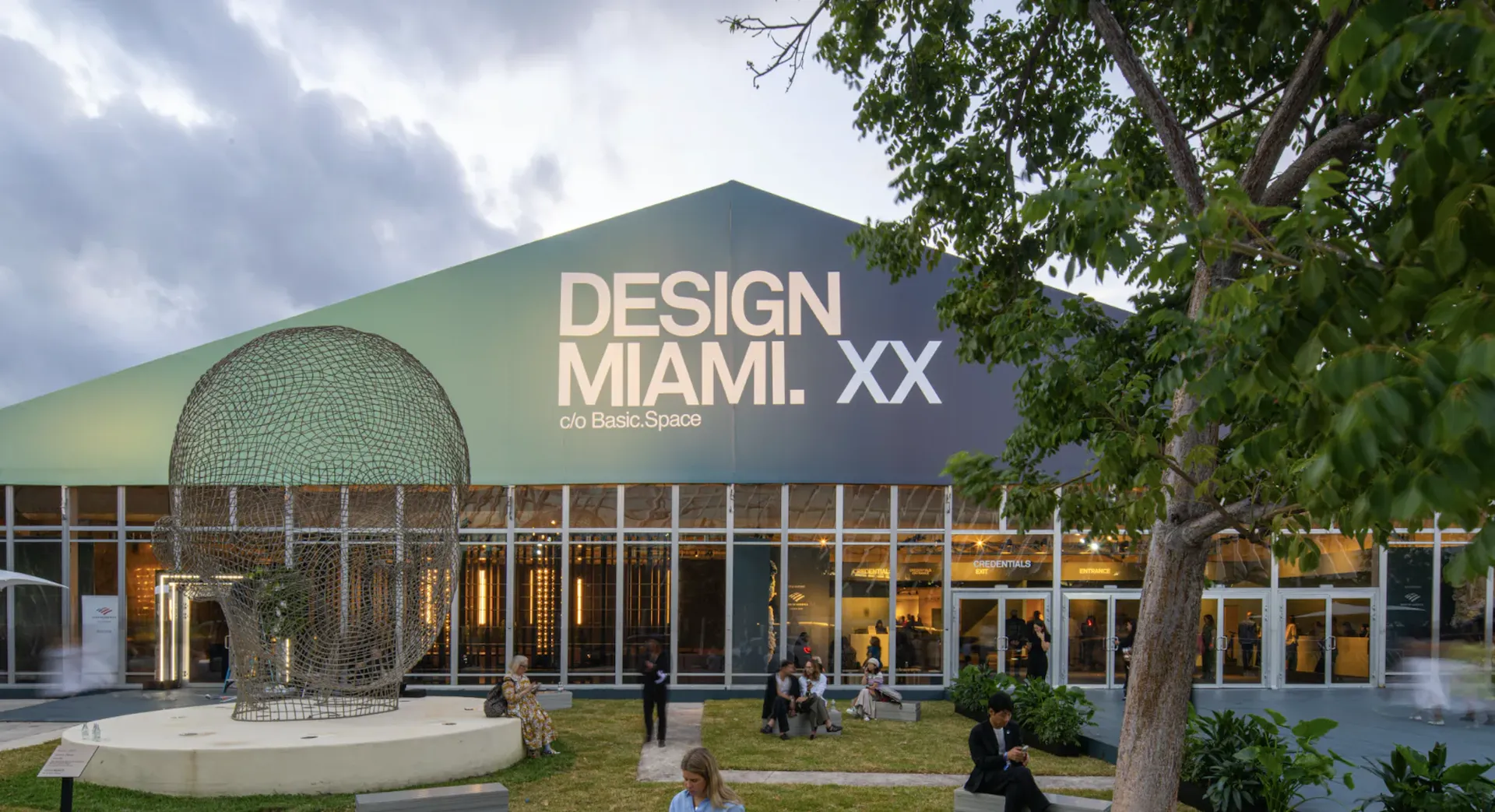A gentle glow emanated from thousands of gently spinning books inside Es Devlin’s “Library of Light” installation in Brera. Lines curled down the block as design enthusiasts from around the world waited for a turn to experience the massive twirling library. It was one of hundreds of inspired and interesting moments that can only be found at Salone del Mobile, the world’s largest furniture and lighting trade show.
Further north in the city at the Fiera Milano Rho fairgrounds tens of thousands of visitors streamed in beneath a banner proclaiming the “Thought For Humans” theme. This human-centric motto—emphasizing well-being and sustainability—set the tone for an event that balanced commerce with culture. Over six days, the fair welcomed 302,548 visitors (on par with 2023’s turnout) and hosted 2,103 exhibitors from 37 countries. It was a particularly odd year to visit the fair as an American but Maria Porro, the president of Salone del Mobile, was quick to point out the fairs’ ability to “turn difficulties into opportunities.”
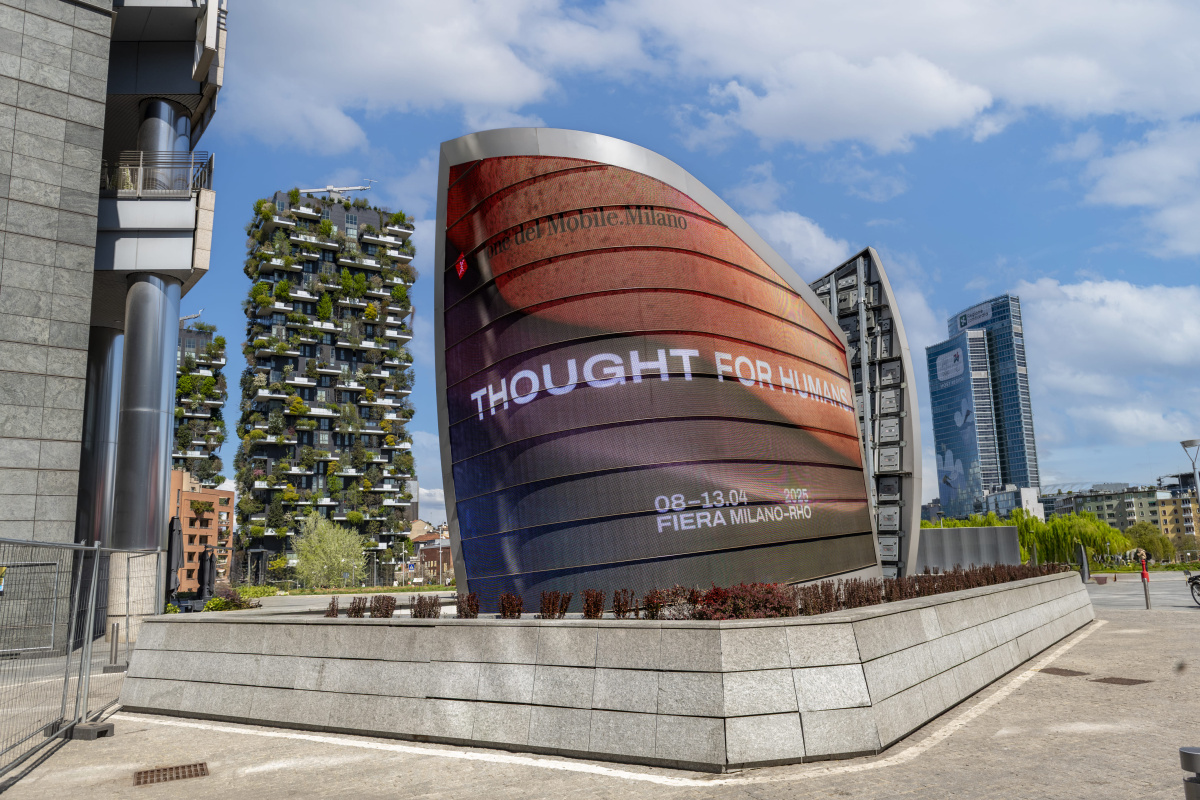
The theme at the fair this year was “Thought For Humans” emphasizing well-being and sustainability. Piazza Gae Aulenti, Milano during Salone del Mobile.Milano 2025. Photo by Dentsu Creative Italia
The biennial Euroluce lighting exhibition returned this year (read our full recap of Euroluce 2025 here) and took center stage with 306 exhibitors. Across the busy furniture halls there was also a return to functional minimalism, with designers revisiting clean lines and natural materials.
Every year our editorial team does our best to report on the best the fair has to offer—but to be honest—it’s an impossible task. The fair is just too big, too expansive, to truly see everything. But great design has a way of standing out. Here’s what we noticed:
- Vesta modular sofa by Studiopepe
- Suricata, a hybrid desk-stool by Inma Bermúdez Studio designed for spontaneous work moments. Photos by Maria Teresa Furnari courtesy Sancal
Sancal Finds Poetry in Production
In the industrial outskirts of Yecla, Spain, Sancal has long fused the rigor of furniture manufacturing with a commitment to expressive, contemporary design. I’m also surprised at the risks they take and their functional yet funky work.
The brand unveiled WorkArt, a conceptual installation by their in Estudio Sancal—helmed by sisters Esther and Elena Castaño-López—that turned their factory’s residue into raw material for an exhibition on the beauty of making.
“We broke the mold once again,” said Elena, referencing the shift toward deep, opaque tones that emphasized texture over color. These deep mottled hues (I kept thinking of the term “Muppet fur,” is that even a thing?) appeared across their new releases, including the Vesta modular sofa by Studiopepe, and Planta, a system of lounge chairs and seats designed by Yonoh with organic silhouettes that reference the shape of growing plants.
They also presented the modest Suricata, a hybrid desk-stool by Inma Bermúdez Studio designed for spontaneous work moments, and an expanded Cita series from Note, adding new dimensions to the brand’s modular bench and table line. Berlin-based Geckeler Michels introduced Seta, a minimal shelving system named after the Spanish word for mushroom, a nod to its cap-like curves. sancal.com
- Cristina Celestino’s Luminora Light balances the opulence of Murano glass with geometric precision, creating a suspended sculpture of glowing symmetry. Photos courtesy of Moooi
- The Haybale Lounge Chair with Footstool by Nicholas Baker translates rural memory into a sculptural form.
From Farm to Form with Moooi
The Dutch lifestyle brand Moooi—known for its fusion of fantasy and function—unveiled A Life Extraordinary across the city, punctuated by the debut of its permanent store on Via Filippo Turati and an immersive installation at Salone del Mobile.
At the fairgrounds, Moooi introduced the Haybale Lounge Chair with Footstool by Nicholas Baker translates rural memory into a sculptural form—stacked cushions held by bold straps, offering both comfort and an obvious nod to agrarian utility.
Beta Living Pebble, a kinetic lighting system with poetic movement, and the Serpentine 8 Large by Front, an airy spiral of cones scaled up for greater drama. moooi.com

Meritalia’s Radical Everyday exhibition. On the left is the Morphologica armchair by Misha Kahn. The brand is known for blurring craft and provocation. Photo courtesy of Meritalia
The Everyday Get a Jolt from Meritalia and Friends
Italian Radical Design returned as a unified force, with Meritalia, Memphis, and Gufram each staking out their visions of rebellion. Founded in 1987, Meritalia has long positioned itself as a laboratory for bold, unconventional ideas. This year’s installation “Radical Everyday” designed by architecture studio (AB)NORMAL proposed domestic space as a site for reinvention and irreverence. meritalia.it
- Mano by Cinzia Ruggeri is a velvet-upholstered seat shaped like an open hand.
- Punch a Wall by Studio Job, a punching bag reminisicent of column of red bricks and the iconic Pratone cactus lounge chair. Photos courtesy of Gufram
Gufram’s Theater-like Display
Gufram’s booth felt more like a pop-art theater than a trade display, with new works from Cinzia Ruggeri, Snarkitecture, and Studio Job. gufram.it
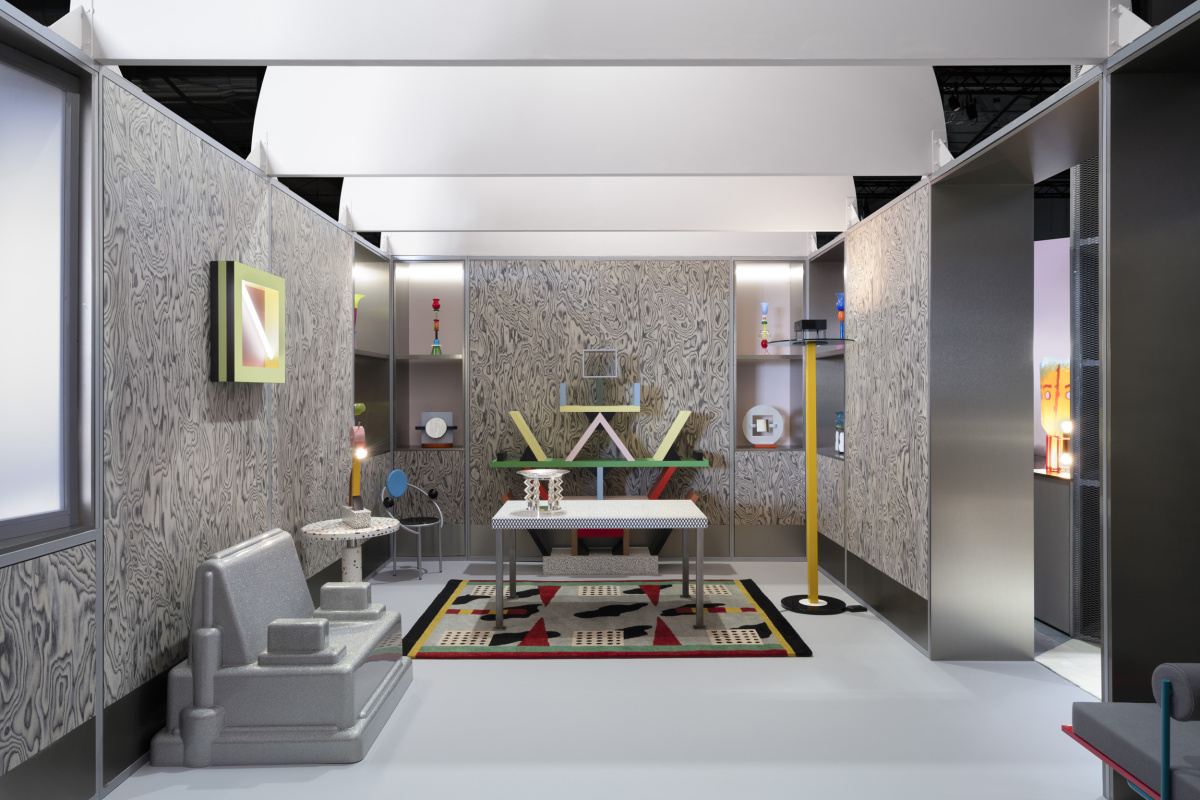
Ettore Sottsasss Venezia table, originally made for his Milan apartment, emerged as a centerpiece in the Memphis exhibit. Photo courtesy of Memphis
The Memphis Exhibit Plays with Geometry
Memphis was founded by Ettore Sottsass in 1981. For the first time Memphis opened its catalog to pieces previously unseen by the public, designed by the movement’s founding members between 1981 and 1986. Ettore’s Venezia table, originally made for his Milan apartment, emerged as a centerpiece. memphis.it
- Sen is a sculptural lounge chair designed in collaboration with Yabu Pushelberg
- “Sen appears to spring to life from a fountainhead,” says Yabu Pushelberg. Photos courtesy of Leolux
Leolux and Yabu Pushelberg Take a Sculptural Turn
The Dutch brand Leolux unveiled Sen—a sculptural lounge chair designed in collaboration with Yabu Pushelberg. “Sen is a lounge chair that appears to spring to life from a fountainhead,” the designers noted.
Other launches included Modius, a modular sofa by Hanne Willmann with retro flourishes and customizable proportions; Lodey, a swivel chair by Gino Carollo; and Conka, a new dining table shown with the Vynn armchairs by kaschkasch and Christian Werner. leolux.com, yabupushelberg.com
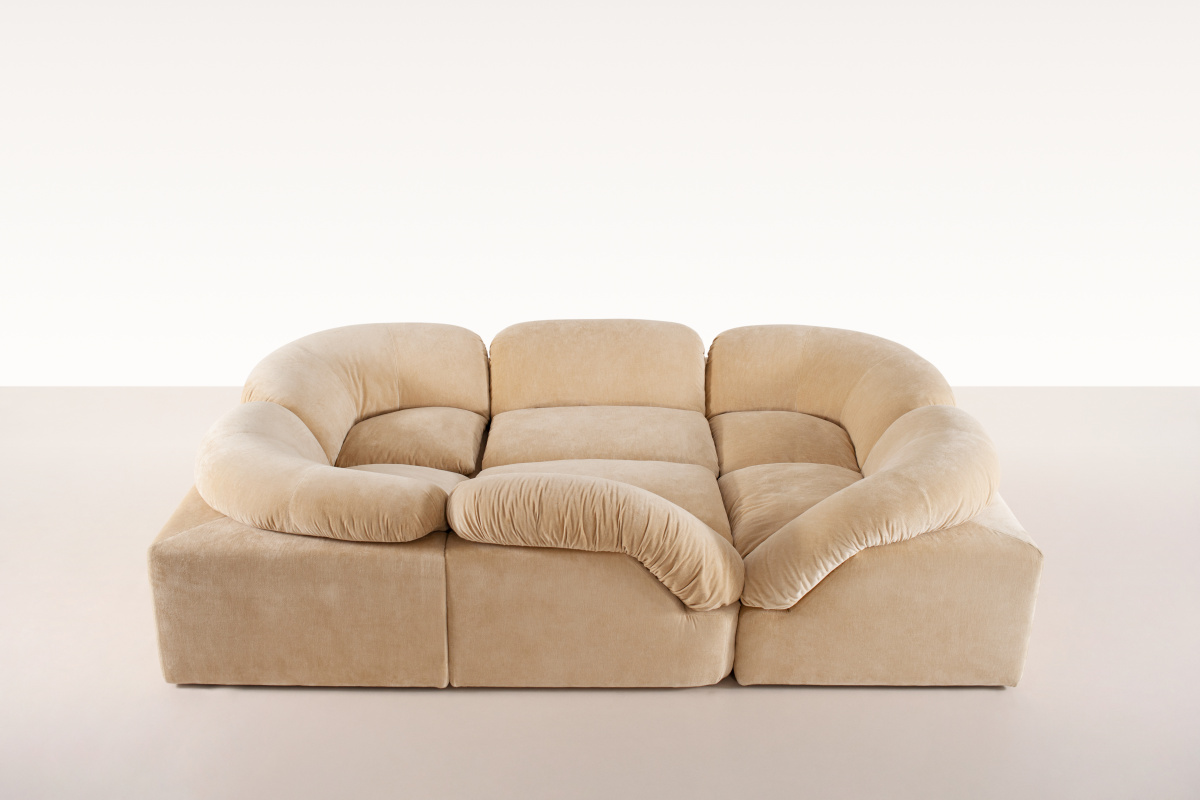
Bread & Butter, a collection by British designer Faye Toogood for Tacchini was originally modeled in butter and slices of sourdough. Photo courtesy of Tacchini
Tacchini Goes from Sourdough to Sofa
Tacchini’s design was meant to offer a pause—a moment of quiet design clarity inside the noise of the fair, which is ironic given their extreme popularity made it one of the most crowded and heavily trafficked exhibits at the show. Designed by Matteo Fiorini of Studio LYS with styling by Charlotte de La Grandière, the booth unfolded through a sequence of rooms that felt very apartment-like.
The standout debut was Bread & Butter, a collection by British designer Faye Toogood. Originally modeled in butter and slices of sourdough, the forms were translated into modular sofas and tables with soft edges and textural finishes. tacchini.it, fayetoogood.com
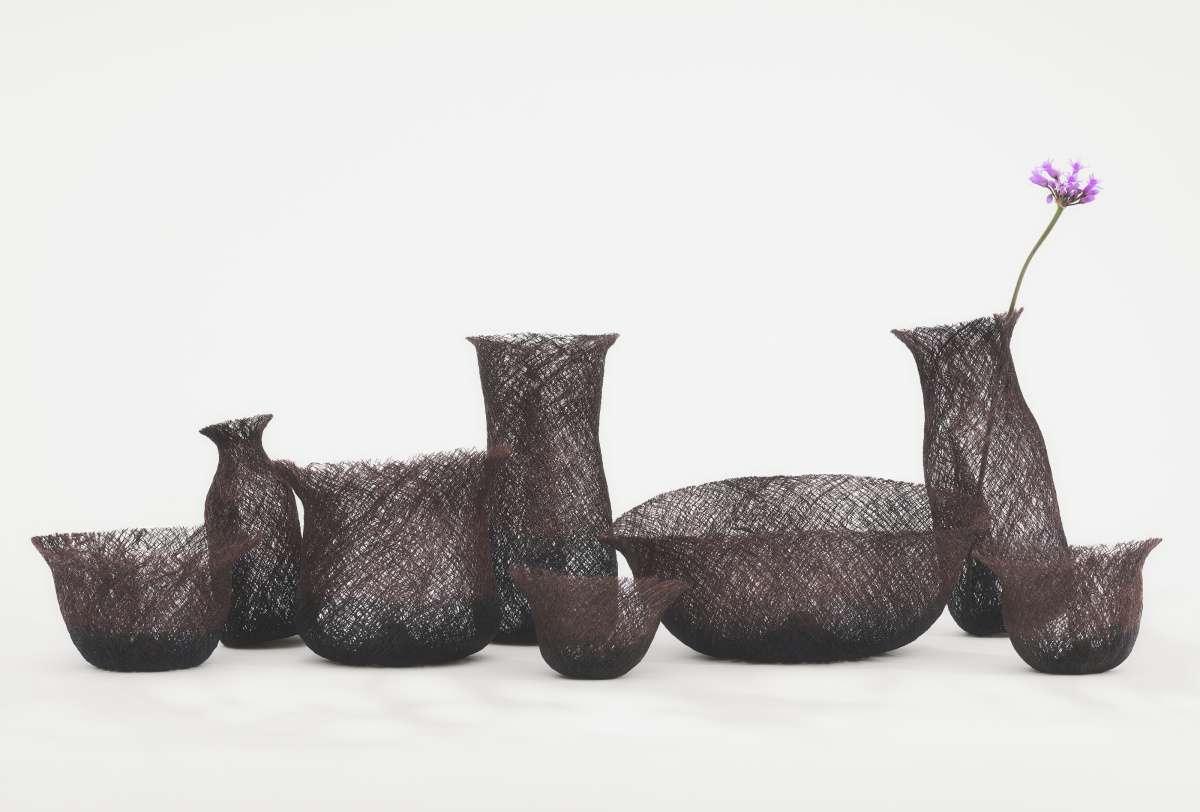
Awarded first prize, Kazuki Nagasawa’s Utsuwa-Juhi Series is a collection of vases and containers that reimagine Japanese craft heritage. Photo by Ludovica Mangini and courtesy of Salone del Mobile
Kazuki Nagasawa Wins First Prize at SaloneSatellite
The 14th edition of the SaloneSatellite Award honored designers under 35 who looked to traditional craftsmanship to shape the future of design. The theme, New Craftsmanship: A New World, invited young talents to reinterpret age-old techniques through sustainable innovation.
Awarded first prize, Kazuki Nagasawa’s Utsuwa-Juhi Series is a collection of vases and containers that reimagine Japanese craft heritage through a quiet, poetic lens. Using bark as a primary material and employing traditional dyeing methods, Kazuki achieves expressive forms that jury president Paola Antonelli described as “an object-non object, a presence-non-presence.” super-rat-design.com
- During Salone’s Euroluce, 101 Copenhagen debuted their Drop light, a fresh line of hand-blown glassware, and sculptural vases in glass and resin—an evolution from their signature ceramics.
- “All the glassware and vases are molded and hand-finished,” says Mads Pedersen, PR at 101 Copenhagen. “People really connect with that level of craft.” Photos courtesy of 101 Copenhagen
Sculptural Lighting and Glass Take Center Stage at 101 Copenhagen
During Salone’s Euroluce, 101 Copenhagen debuted their Drop light, a fresh line of hand-blown glassware, and sculptural vases in glass and resin—an evolution from their signature ceramics. With four new vase lines also introduced, the brand continues to deepen its immersive, artisan-driven approach to interiors.
“All the glassware and vases are molded and hand-finished,” says Mads Pedersen, PR at 101 Copenhagen. “We even had a video made at the factory—it shows how each piece is formed, painted, and detailed. People really connect with that level of craft.”
Founded by Tommy Hyldahl and Kristian Sofus Hansen—whose backgrounds in Japanese architecture and fashion influence the brand’s brutalist-meets-medieval-modern aesthetic—the studio emphasizes craftsmanship, slow design, and storytelling through form and material. 101cph.com
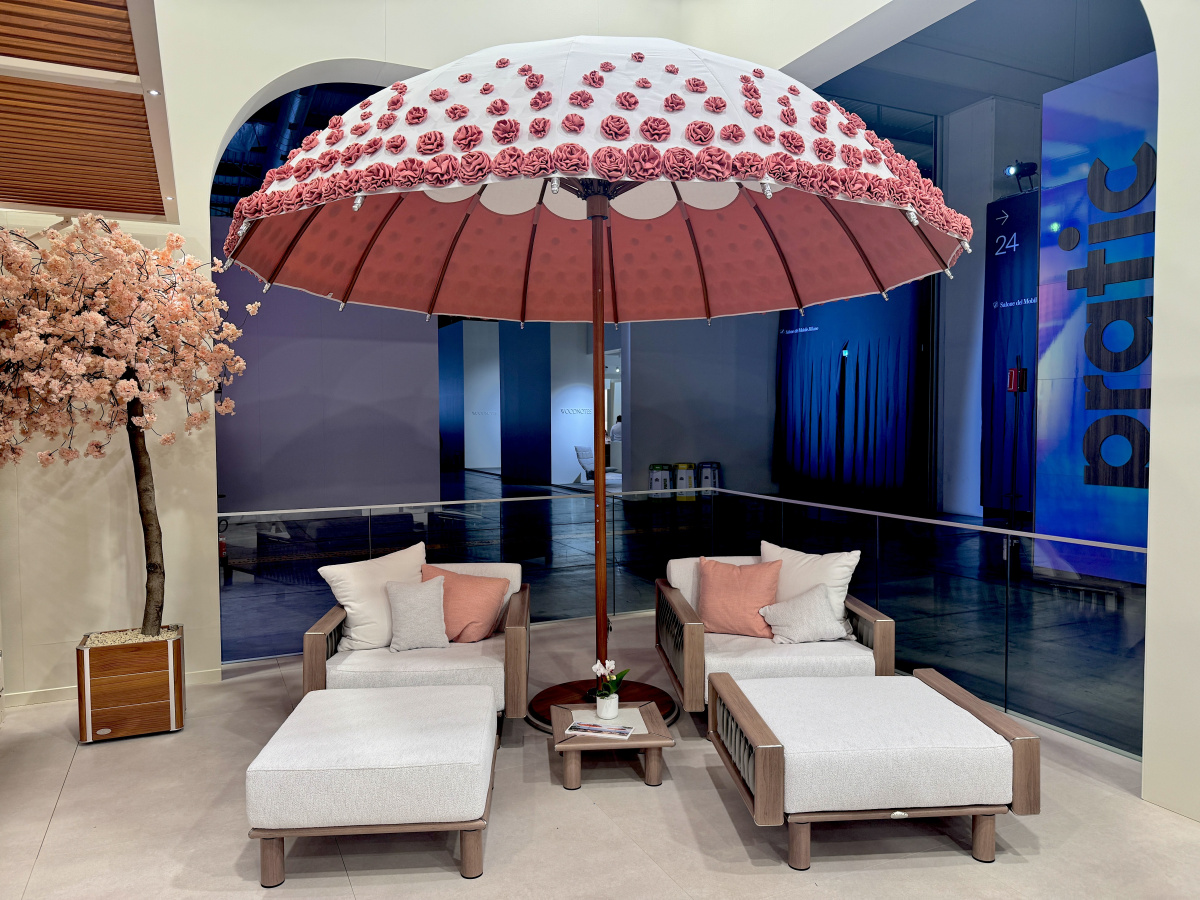
Featuring a dome shape and hundreds of hand-tufted blossoms, Tuuci’s Bolero Ombré Blossom parasol is like stepping under a blooming canopy. Photo by Gianna Annunzio
Tuuci’s Parasol in Bloom
Tuuci’s latest showcase is all about blending beauty, comfort, and smart design for the way we live today both indoors and out. The company’s Bolero Ombré Blossom parasol stood out among their latest collection. Featuring a dome shape and hundreds of hand-tufted blossoms, it’s like stepping under a blooming canopy. The scalloped details inside add an extra touch of charm, making it feel more like a piece of art than a standard sunshade.
“The design was inspired by the fashion world in its use of color, texture, and detail,” says CMO Mausi McDaniel. “Each blossom was hand-pinned in different patterns and tested in various sizes and arrangements until we collectively felt that spark—that moment when we knew we’d found the look we wanted to share with the world.” tuuci.com
- MDEAR by Sebastian Herkner is a collection of five organic shapes that can stand alone or join together for larger seating arrangements. Photo courtesy of DEDON
- Gloster’s Wrap collection is an example of their “seed to seat” work with sustainably-grown teak. Photo courtesy of Gloster
DEDON and Gloster Combine Wood and Weave
DEDON and its sister brand, Gloster, were shown side-by-side at Salone this year. The two brands often partner together and share a similar approach, according to Dedon Director of Marketing Nicole Ciminera: comfort, craftsmanship, and outdoor furniture that’s made to last. DEDON was actually the first to use weatherproof fiber in luxury outdoor furniture—all handwoven. Gloster has been working with teak for over 60 years, using only sustainably sourced wood.
“Though they’re totally different brands, we found the Gloster customer was looking for something beyond just teak,” says Katie Stamaris, Gloster Vice President of Business Development. “So this year you’ll see a lot more of an incorporation of wood, fibers, and different materials.” dedon.de, gloster.com

Arper’s Catifa 46, now called Catifa (RE) 46, has a new shell made entirely from recycled plastic. It also has a fresh look inspired by natural materials and eco-friendly architecture. Photo courtesy of Arper
Arper Combines Recycled Plastic with Purpose
Arper continued to lean into sustainability, showing off how the company is rethinking what “beautiful design” really means. At the center of their space, they took visitors on a journey through how they research and experiment with materials, and ending with their new collections for 2025. One of the big stars is the Catifa Carta, which first launched in 2024. It now comes with a wooden base that cuts carbon emissions by more than 20% compared to the metal version.
They’re also bringing back an old favorite: the Catifa 46, now called Catifa (RE) 46, with a new shell made entirely from recycled plastic. It also has a fresh look inspired by natural materials and eco-friendly architecture. arper.com
- Humanscale debuted Humanscale Living during Salone, unveiling their new collection geared toward the high-end consumer.
- Humanscale Living is all about minimalist, timeless pieces that emphasize intuitive functionality over fleeting trends. Photos by Marek Swoboda
Humanscale Living Elevates the Home
Humanscale debuted Humanscale Living during Salone, unveiling their new collection geared toward the high-end consumer. Humanscale Living is all about minimalist, timeless pieces that emphasize intuitive functionality over fleeting trends. These pieces are designed to enhance contemporary home life, according to the company.
The collection includes the upcoming Diffrient Lounge Chair, the sleek eFloat Quattro table, and a range of new task chairs like Sedeo, Freedom, Summa, and Trea Task Lite. They’ve also introduced a curated selection of special editions featuring premium textiles. These pieces blend beautiful function with thoughtful design, crafted by experts in comfort and well-being to elevate contemporary home life. humanscale.com/living
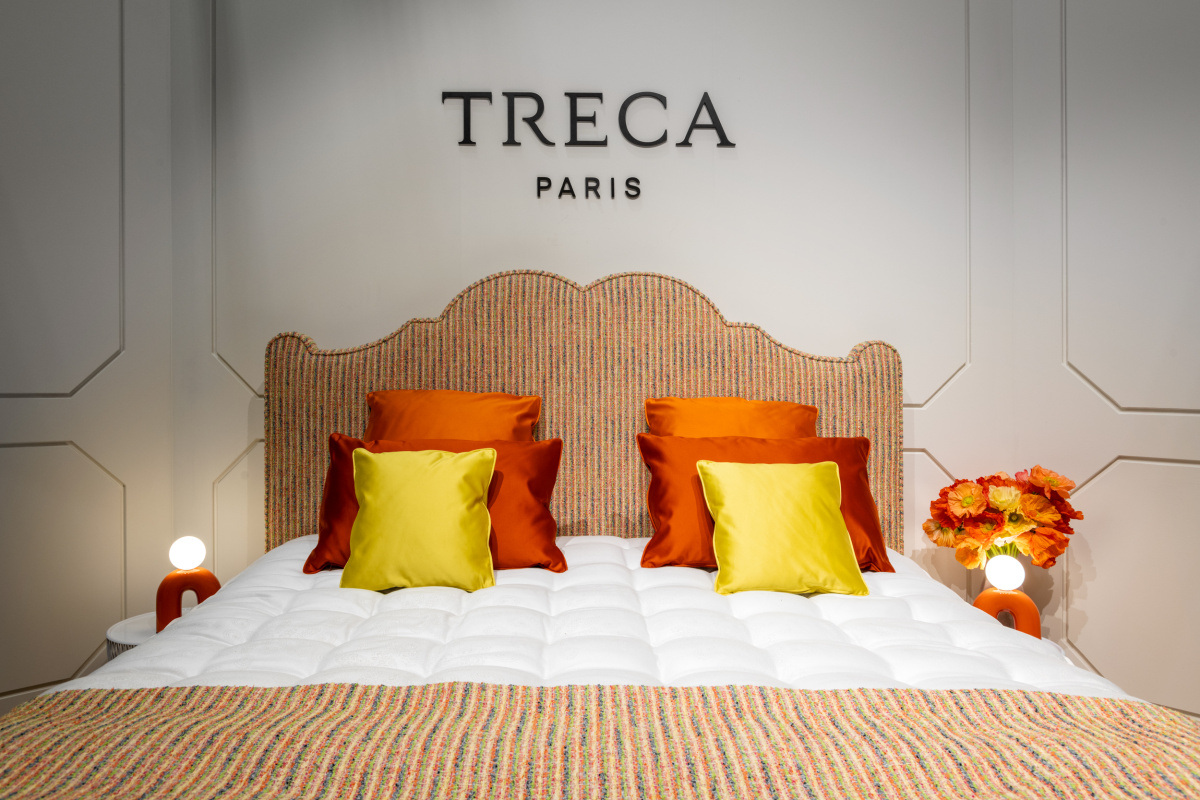
Treca debuted a new multi-colored fabric from Lesage Intérieurs, a company that hand-embroiders high end textiles for Chanel. Photo courtesy of Treca
Treca Heritage Meets Haute Home Fashion
Artisan bed maker Treca has been crafting bedroom furnishings out of Paris since 1935. The brand has collaborated with several French palaces and hotels over the years, though it introduced more modern collaborations during Salone this year. Among them was a multi-colored fabric from Lesage Intérieurs, a company that hand-embroiders high end textiles for Chanel.
“All of Chanel’s flagship window displays were designed by Peter Marino this past holiday season,” says North America managing director Clement Dartois. “He used this fabric in the displays and inserted some tiny lights inside. Our customers have been very excited about this fabric, so we put it front and center in the showroom window.” treca.com
Organizers are already planning the next edition, set for April 21–26, 2026. salonemilano.it
